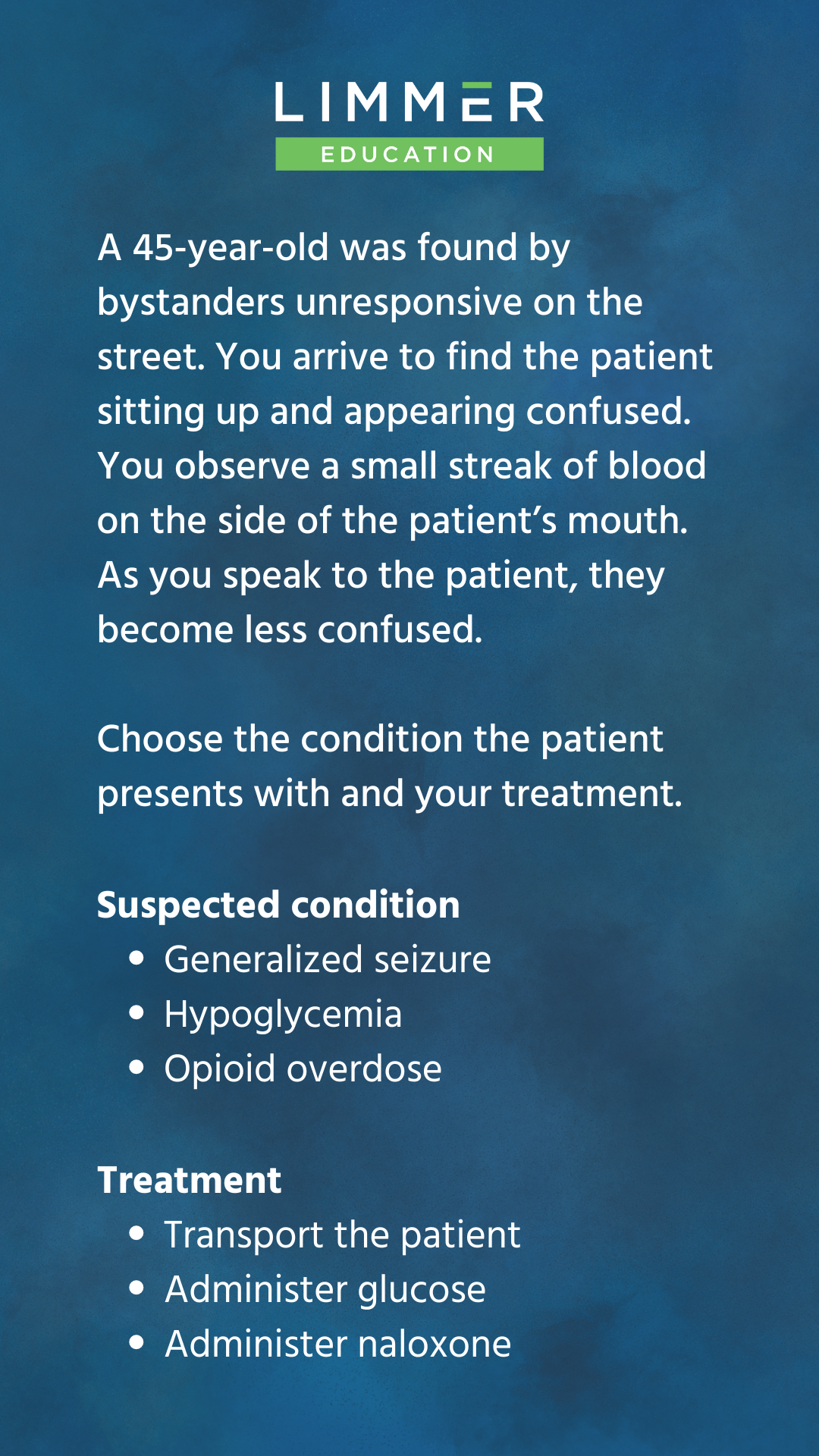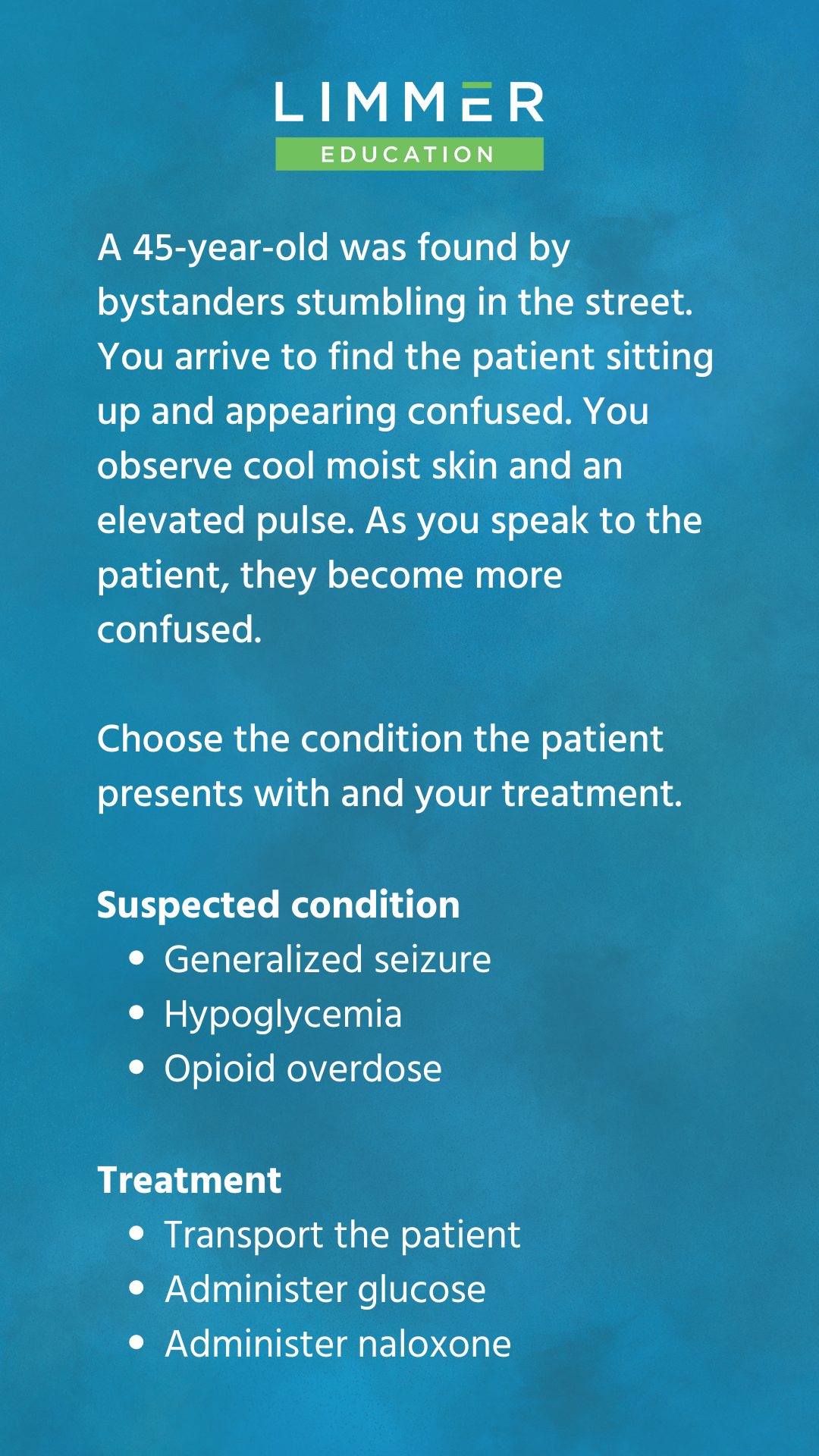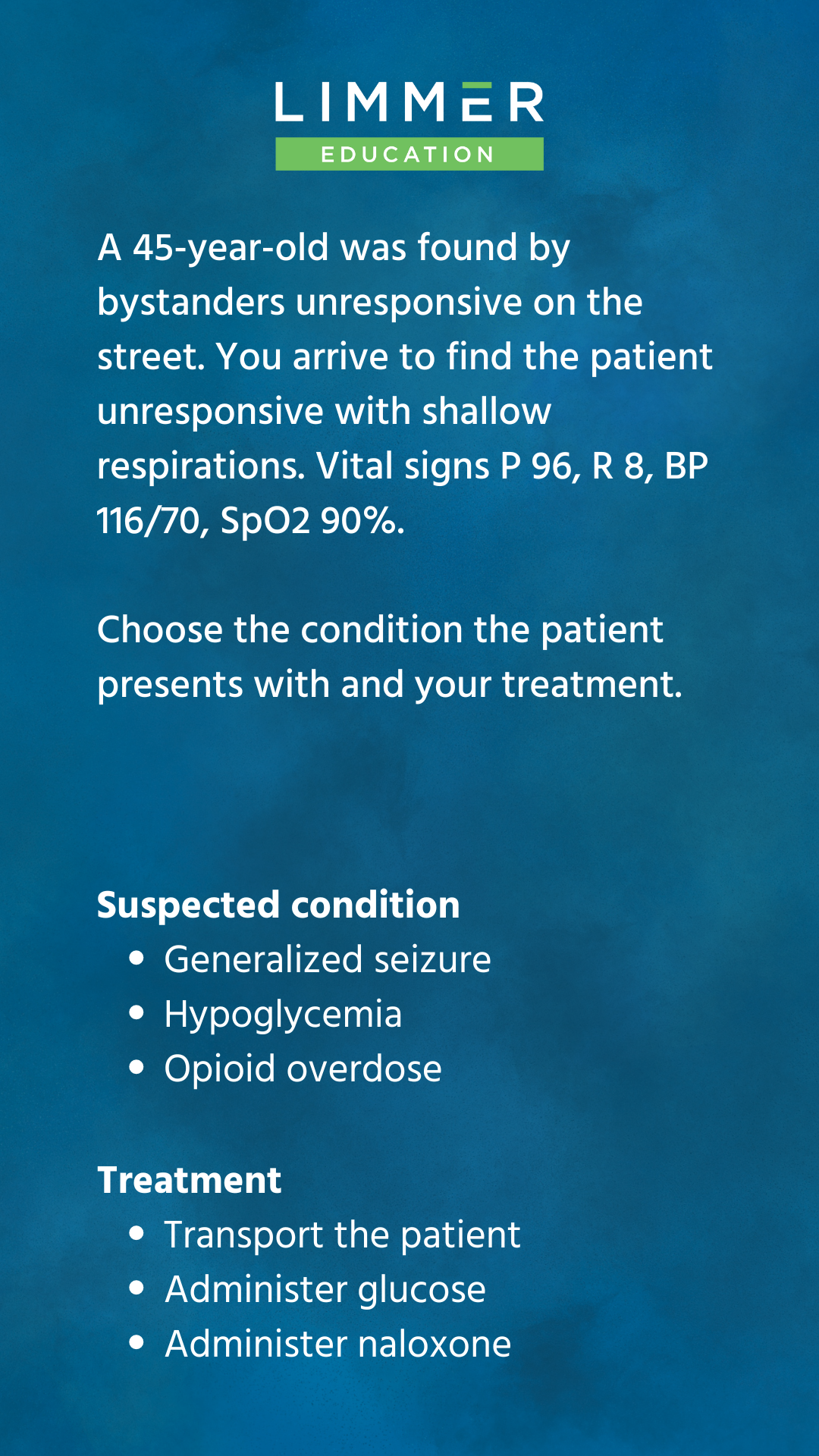
Dan Limmer, BS, NRP

by Limmer Education
Our articles are read by an automated voice. We offer the option to listen to our articles as soon as they are published to enhance accessibility. Issues? Please let us know using the contact form.
We’ve talked a lot about the changes to the NREMT’s question styles and how to improve the quality of your classroom test questions to better match what students will see on the NREMT. Now let’s talk about simple, specific ways to serve up the new question styles in your classroom.
Remember the goal of these questions is not only to assess students’ knowledge, but to stimulate critical thinking and problem-solving skills.
Some learning management systems have basic functionality for multiple response and drag and drop. But you don’t actually need a high-tech solution to give your students practice with the new questions. Start by going through your current question banks; you’ll find a lot of them can easily be made into multiple response, build a list or drag and drop style items. Your tests don’t need a ton of new question styles. The idea is just to make sure students are used to the new styles. A few per test is fine and you can add more as time goes on.
But we do have some suggestions to increase your new question output.
This National Registry item-writing technique lets you create multiple questions from a single core idea. By varying the details, you can assess different knowledge points and topics without writing a new question from scratch every time.
Here’s a three-part example.

In our first version of this question, there are two details students should notice. One is the small streak of blood on the side of the month. Two, the patient gradually becomes less confused. That’s that postictal period. This question doesn’t spell anything out, but it provides just enough information to understand what’s happening. This is a generalized seizure and your treatment is to transport the patient.

This time, the patient becomes more confused, and they present with cool, moist skin and an elevated pulse. Nothing about respiratory depression here. This one is a bit more straightforward. Your students should be able to identify hypoglycemia as the condition and glucose administration as the treatment.

And our final twist on this scenario. It’s the same core scenario and same distractors, but we modified the stem to fit our final unused answer choices. The answers here of course are opioid overdose and naloxone administration.
We don’t recommend putting your twisted sisters all on the same exam. But you could use one on a unit exam, one on a quiz, and one on your final exam. It’s a good way to multiply your item-writing abilities and build up a new repertoire of test questions.

Dan Limmer, BS, NRP

Dan Limmer, BS, NRP